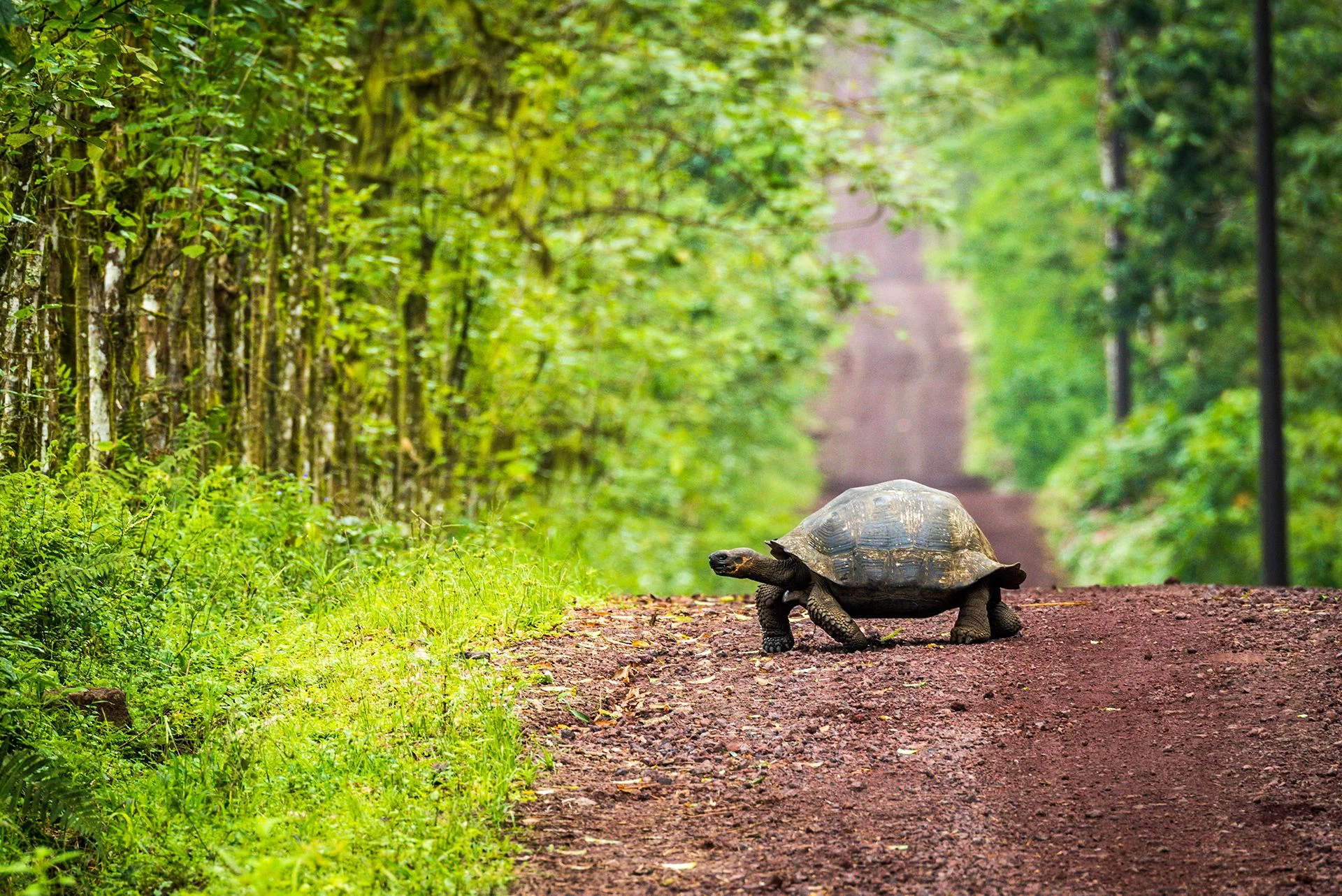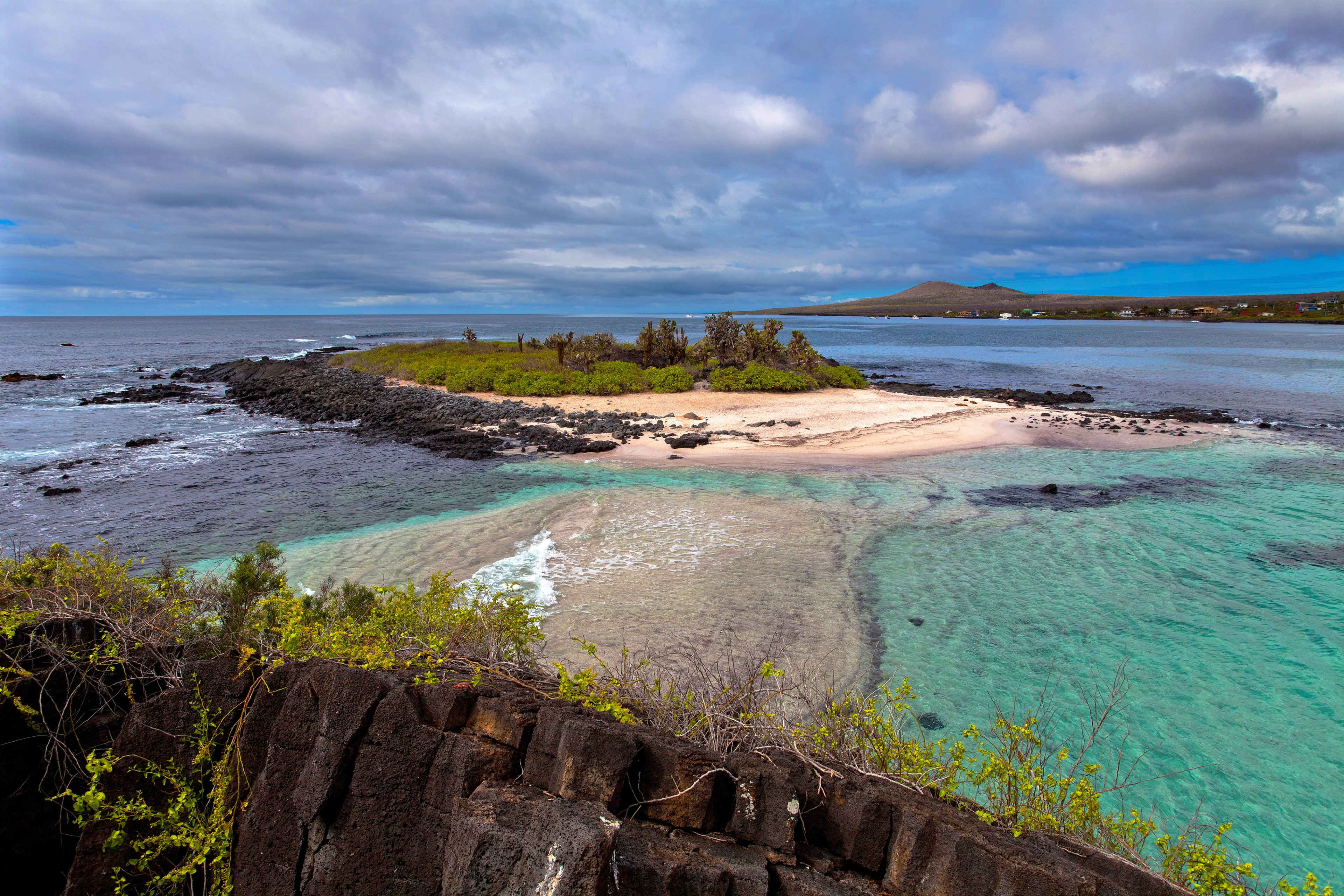Expedition Travel Guide for the Galápagos Islands
Whether you're a nature enthusiast, adventure seeker, or curious traveler - start planning your journey and get ready to expect the unexpected as you experience the pristine beauty of these iconic islands.
The Galápagos Islands | 'I never want to leave'
What if you could discover the unforgettable wonders of the Galápagos Islands, Earth's natural wonderland? With Hurtigruten Expeditions, you can!
Exploring these idyllic islands onboard our small expedition ships will take you off the beaten track and closer to nature for a more intimate experience. Nestled off the coast of Ecuador, in the Pacific Ocean, this remote archipelago is a living laboratory of evolution, home to unique and diverse wildlife that have been inspiring explorers and naturalists ever since Charles Darwin first stepped foot here in 1835.
With our Travel Guide, we have all the essential travel tips, packing lists, and insights to get you ready for your trip.
Know Before You Go
What do I need to pack for the Galápagos Islands?
Regardless of what time of year you visit, a good pair of sturdy walking shoes (Day hikers) are recommended for the hikes as trails vary in difficulty, but most are of volcanic nature.
When is the best time to visit the Galápagos?
Being in the tropics, it’s always a good time to visit the Galápagos Islands, and there’s an array of extraordinary wildlife to discover all year round.
How do you get to the Galápagos Islands?
Two airports are best located for the Galápagos Islands and they are Quito’s Mariscal Sucre International Airport and Guayaquil's José Joaquín de Olmedo. Both are short domestic flights from the Galápagos Islands.
Is the Galápagos Islands suitable for families?
With their unique wildlife and captivating natural beauty, these islands offer a memorable experience for all of the family. Exploring these islands provides numerous educational opportunities for children, from learning about evolution and diverse ecosystems to close encounters with the local stars such as the Galápagos giant tortoises and playful sea lions.
Our Family-friendly cruises and guided tours ensure safety and comfort, while activities like snorkeling, hiking, and wildlife spotting create cherished moments for families to bond and appreciate the wonders of nature together.
How will I explore the Galápagos Islands? What is a typical day like?
Expect the unexpected as you explore the Galápagos Islands by sea and land, with a range of daily excursions, science projects, and talks we will ensure you uncover the magic of these iconic islands.
Our small expedition boats allow us to land on beaches and terrain away from the crowds. Exploring the various islands on foot turns an adventure into an expedition - with hikes amongst the distinct ecosystems for a more intimate experience amongst the truly unique flora and fauna.
Or what could be better than drifting over a colorful reef and seeing marine life illuminated in crystal-clear water? Where the conditions allow, you can take to the water where you could snorkel amongst sea lions or even paddleboard past penguins. With MS Santa Cruz II as your floating base camp, it is the perfect spot to return to for some relaxation and reflection on some of the lifelong memories made in the Galápagos Islands.
How can I get involved with the Science & Education program?
The Galápagos is at the center of many global conservation and research efforts, following the groundbreaking work of Charles Darwin in the early 1800's. You will have the opportunity to visit the Charles Darwin Research Station, where over 200 scientists and volunteers are engaged in numerous projects to boost biodiversity in the region.
The onboard Expedition Team and Scientists have many years of experience exploring and studying around the Galápagos Islands. Throughout your stay, they will deliver a range of in-depth lectures, ranging from the history of these islands, the unique biodiversity, and current conservation efforts. Where conditions allow we will also use the smaller expedition boats to undertake Citizen Science projects and use the onboard Science Center to analyse samples to aid international research across a range of areas.
How do I find the right voyage?
Best All Round
Nine of the Best Isles | 10 Days
Truly follow in the footsteps of Charles Darwin, on this journey of discovery. As the name suggests this expedition takes in 9 key islands that make up the Archipelago, including Isabela and Floreana - two of the four islands visited by Darwin.
Perfect for naturalists and adventurers, this active itinerary offers multiple landings across the islands, and ample opportunities to explore the volcanic landscapes and see some of the iconic wildlife including Sea Lions, Turtles, and the Giant Tortoises.
Best Short Trip
Nature and Wildlife Expedition Cruise | 7 Days
Limited on time? This is the perfect itinerary covering some of the must-see sights. Start your trip with an extended stay in the Ecuadorian Capital, Quito, with a walking tour of the historic old town and a visit to the 'Middle of the World City'.
In the Galápagos - set sail for Santiago, known for its pristine beaches and landscapes. Turning towards Rábida and Bartolomé, these islands provide great opportunities to spot some of the unique wildlife including sea lions and the Galapagos penguins.
Best for Culture
Machu Picchu to the Galápagos Islands | 12 Days
Combining the unique wildlife of the Galápagos, with the historic culture of Machu Picchu, makes this the ideal 14-day expedition for those wanting to experience two of South America's iconic treasures.
Also within this itinerary, is a visit to the Cotopaxi Volcano (running until March 2024) - one of the continent's most active volcanos and an opportunity to spot some of the region's other famed wildlife including llamas, and with some luck the majestic Andean Condor.
When is the best time to visit the Galápagos Islands?
Being in the tropics, it’s always a good time to visit the Galápagos Islands, and there’s an array of extraordinary wildlife to discover all year round.
The temperature doesn't vary significantly throughout the year - January to May are the warmer months but also the rainy season. It's during this time that the sea is at its warmest making it the ideal time to get into the water and spot some of the unique marine life. It's the main breeding season for many birds, reptiles, and land animals including the iconic Galápagos giant tortoise.
Between June - December, it is drier but has marginally cooler temperatures. The seas around the islands can be rougher due to cooling sea temperatures and the beginning of the garúa, or sea mist season. However during this time, it is the ideal time to see whales, dolphins, and penguins, who will be feasting on the bounty of the seas around the islands.
Whatever time of year you choose to explore these iconic islands - you will be sure of a unique adventure.
How do you get to the Galápagos Islands?
It may seem like getting to these remote islands is an expedition in itself however, many carriers fly to Mariscal Sucre International Airport (UIO) in Quito or José Joaquín de Olmedo International Airport (GYE) in Guayaquil. Within the cost of your voyage, we include return flights in economy class between key gateways, and entirely dependent upon the expedition you choose. Be sure to check the 'What's Included' section of the voyage to see which applies to you, flights include:
from/to Quito or Guayaquil to Baltra and the Galápagos Islands.
from/to Lima - Cusco (Peru) for those with the Machu Picchu combination.
Please Note: The checked baggage allowance is up to 23kg, and a cabin bag of up to 8 kg. These limits can vary between long-haul and the included short-haul flights run by LATAM, to/from Lima (for the Machu Picchu program) and Quito/Guayaquil (for Galápagos Islands). Additional luggage can only be booked as a paid service at the check-in counter.
What to pack for an expedition to Galápagos Islands?
The Galápagos offers a plethora of adventures as you experience the rich nature and unique wildlife of these idyllic islands. Regardless of what time of year you visit, a pair of sturdy walking shoes is recommended for the hikes as trails vary in difficulty, but most are of volcanic nature.
For those travelling in the warm season (January - May), we recommend focusing on shorts and loosely-fitting tops. This time of year is also the wettest, so be sure to pack a light rain jacket or poncho. If you are visiting during the cooler months (June - December), we suggest packing a light jumper or windbreaker for those chilly nights onboard.
We also recommend packing the following:
Insect repellent
Polarised sunglasses and sunscreen
Sandals or shoes you don‘t mind getting wet
Wide-brimmed sun hat with a chin strap
Swimsuit for the hot tubs
A pair of casual shoes for onboard use
Waterproof small back pack or bag
Rain Jacket
Prescription Snorkeling Masks
Don't forget you will also receive a complimentary reusable waterproof bottle, which is yours to keep at the end of the voyage.




